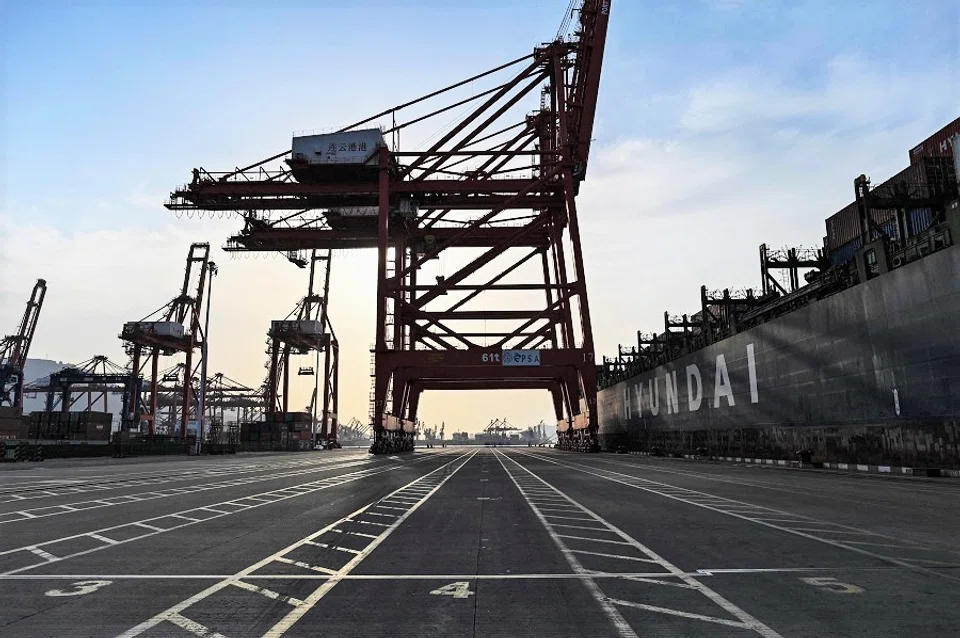Can Biden's new infrastructure plan rival China's BRI?
US President Joe Biden has suggested an alternative to China's BRI - one that is enterprise-led, rather than country-led, bringing together democratic nations to help developing nations to upgrade their infrastructure. How attractive would this option be amid some countries' fears that China is extending its influence through the BRI?

Since taking office, the new US Biden administration has characterised China as "the only competitor potentially capable of combining its economic, diplomatic, military, and technological power to mount a sustained challenge to a stable and open international system". On 25 March, Biden held his first presidential press conference since his inauguration. He said that China would never be allowed to surpass the US as the most powerful country in the world during his term of office. He also emphasised that the US would increase investments in domestic infrastructure and key areas such as artificial intelligence, quantum computing and biotechnology, to ensure that the US stays ahead in the competition with China.
At the same time, to strengthen its competitive advantage against China, the Biden administration intends to enhance cooperation with allies and partners, especially Japan, Australia, Canada, the UK and the EU. Biden seeks to unite US allies to contain China, and this is an indirect admission that the US alone is unable to counter the rise of China, particularly in East Asia.
For the US to seriously compete with China, infrastructure development will be an important area. In a recent telephone conversation with British Prime Minister Boris Johnson, Biden has proposed that the US and the UK should have an initiative similar to China's Belt and Road Initiative (BRI), bringing together democratic nations to help developing nations upgrade their infrastructure.
The Biden administration has realised that the BRI poses challenges to US politics and its economy, national security and overseas interests.

The BRI is the hallmark of China's emergence. Through this platform, China is rapidly extending its economic influence in Asia and other parts of the world. China's effective domestic control of Covid-19 has enhanced its leaders' confidence and the ambition to continue to promote and implement the BRI internationally.
Under the BRI framework, China's increasing influence has greatly unsettled the existing global landscape and geopolitics. The Biden administration has realised that the BRI poses challenges to US politics and its economy, national security and overseas interests.
According to official data from China, 138 nations in five continents have signed various BRI cooperation agreements with China as of the end of 2020. Since launching the BRI in 2013, China has spent some US$690 billion in overseas investments and construction contracts for BRI projects in more than 100 nations.

The BRI has attracted increasing attention from the international community. Since its reforms and opening up to the world, China has successfully transformed its economic prowess into expanding regional and global influence. The US and the world cannot ignore the potential impacts of the rise of China and the BRI implementation.
Published by the US Council on Foreign Relations on 23 March, the report entitled "China's Belt and Road - Implications for the United States" recommends that the US should formulate a new strategy that can effectively counter the BRI by promoting high-quality and environmentally sustainable infrastructure development, and ensuring that companies from different nations can fairly participate in infrastructure financing and construction.
The US must convince the global community that it can provide an alternative that is superior to China's BRI in urgently upgrading the infrastructure in a vast number of developing nations.
China and the US will compete in infrastructure
The BRI seeks to connect China with the world through infrastructure, trade, investments and people-to-people exchanges. Through the BRI, China hopes to recreate the prosperous East-West trade along the ancient Silk Road, extending it geographically and expanding it to more developments. The BRI is China's starting point to building a new global landscape and a new model of global interaction.
In recent years, there has been pushback from some nations that the infrastructure projects with investments from China are costly and impractical, with issues of corruption in internal transactions. These nations have reviewed the BRI projects and requested to renegotiate their contractual terms with China to reduce project costs and scale. Biden hopes to take advantage of the dissatisfaction of these nations along the BRI routes and engage them and US allies to form an alliance against the BRI.
The details of Biden's new initiative to rival the BRI remain unclear. The US must convince the global community that it can provide an alternative that is superior to China's BRI in urgently upgrading the infrastructure in a vast number of developing nations. It is noteworthy, however, that US investments in many developing nations have declined and are unable to meet their needs in recent years.
...many transportation facilities in the US, such as roads, bridges and airports, are in disrepair.

According to IMF data, although China has become the second largest economy after the US, its per capita GDP (US$10,582) in 2020 is only one-sixth of that of the US (US$63,051). As the only superpower in the world, the US still has an absolute advantage in domains such as the military, education and R&D.
However, China has the best container port, the fastest rail, the largest airport and the most complete telecommunications infrastructure in the world. It has become the global leader in infrastructure, with solid capabilities in facility construction and operations management. In contrast, many transportation facilities in the US, such as roads, bridges and airports, are in disrepair.
China's BRI infrastructure development model is country-led, through its state-owned enterprises and banks. China is globally competitive in industries such as infrastructure construction, equipment manufacturing, metallurgical building material and communications equipment. Many developing nations urgently require investments, production capacity and technologies in these industries as they hasten the pace of industrialisation and infrastructure upgrading.
By participating in the BRI, nations along the BRI routes will attract more Chinese investments in infrastructure projects, and also gain a platform for their products to enter the China market.
The China-US competition in infrastructure development will be the litmus test for the superiority and effectiveness of China's country-led or the US's enterprise-led model for infrastructure upgrading in developing nations.

Through the BRI implementation, China hopes to establish a new model for global infrastructure financing and development. Being country-led is China's unique advantage in the BRI, a model not found in the US and the West. China's leaders deem private enterprises to be ill-disciplined, have the tendency to expand indiscriminately, and be incapable of fulfilling China's strategic objectives. Hence they distrust them. Clearly, China's HNA Group, Alibaba Group and Wanda Group are cases in point.
In contrast to China's country-led BRI, is the Biden Administration's proposed enterprise-led alternative an attractive option to developing nations that is able to rival the BRI? The China-US competition in infrastructure development will be the litmus test for the superiority and effectiveness of China's country-led or the US's enterprise-led model for infrastructure upgrading in developing nations.
Vast capital is required for infrastructure upgrading in developing nations, and the risks are high. Private enterprises do not have the required capital and the ability to undertake the associated risks. China will continue to implement and expand the BRI if the US is unable to put forward a more effective alternative. Already, Biden's proposed alternative has been labelled by many Chinese netizens as "an imitation".
China must modify its BRI implementation
China must objectively evaluate the progress and existing problems of BRI implementation in the past seven years, without arrogance or complacency. Infrastructure projects, with long development cycles and high risks, are linked to national sovereignty, economy and strategic security. Hence, more countries are wary that China is seeking to extend its influence through the BRI and are worried about China's strategic considerations for the initiative as well as the BRI loans being a debt trap. Furthermore, the Covid-19 pandemic has disrupted many developing economies and their finances. Evidently, the implementation of some committed BRI projects can no longer continue under the original contracts.

China will face increasing challenges if it continues to promote and implement the BRI in its original form. It must modify its model in response to the new geopolitics in the post-Covid-19 era.
To succeed, they must focus more on the economic benefits of overseas investment projects, the voices of the local communities, and environmental sustainability.
The joint communique of the Second BRI Summit in Beijing in 2019 has clearly stated that "high-quality infrastructure should be viable, affordable, accessible, inclusive and broadly beneficial over its entire life-cycle, contributing to sustainable development of participating countries and the industrialisation of developing countries". For the BRI's sustainability, China must focus more on sustainable financing for developing nations along the BRI routes and the long-term financial impacts of loans for infrastructure projects.
China's enterprises that go global must face, accept and adapt to the global standards and rules, as well as establish the principles of sustainable development and be responsible investors. To succeed, they must focus more on the economic benefits of overseas investment projects, the voices of the local communities, and environmental sustainability. A balance among these will be required to secure win-wins.
Related: China's Belt and Road Initiative faces huge challenges in Southeast Asia | Even as the US obstructs its way, how can China build trust for the BRI? | The most likely outcome of the BRI | From supply chain to BRI, a super-connected China impacts the world | No more easy money: Will BRI projects in Southeast Asia slow and stall?



![[Photos] Fact versus fiction: The portrayal of WWII anti-Japanese martyrs in Taiwan](https://cassette.sphdigital.com.sg/image/thinkchina/3494f8bd481870f7c65b881fd21a3fd733f573f23232376e39c532a2c7593cbc)

